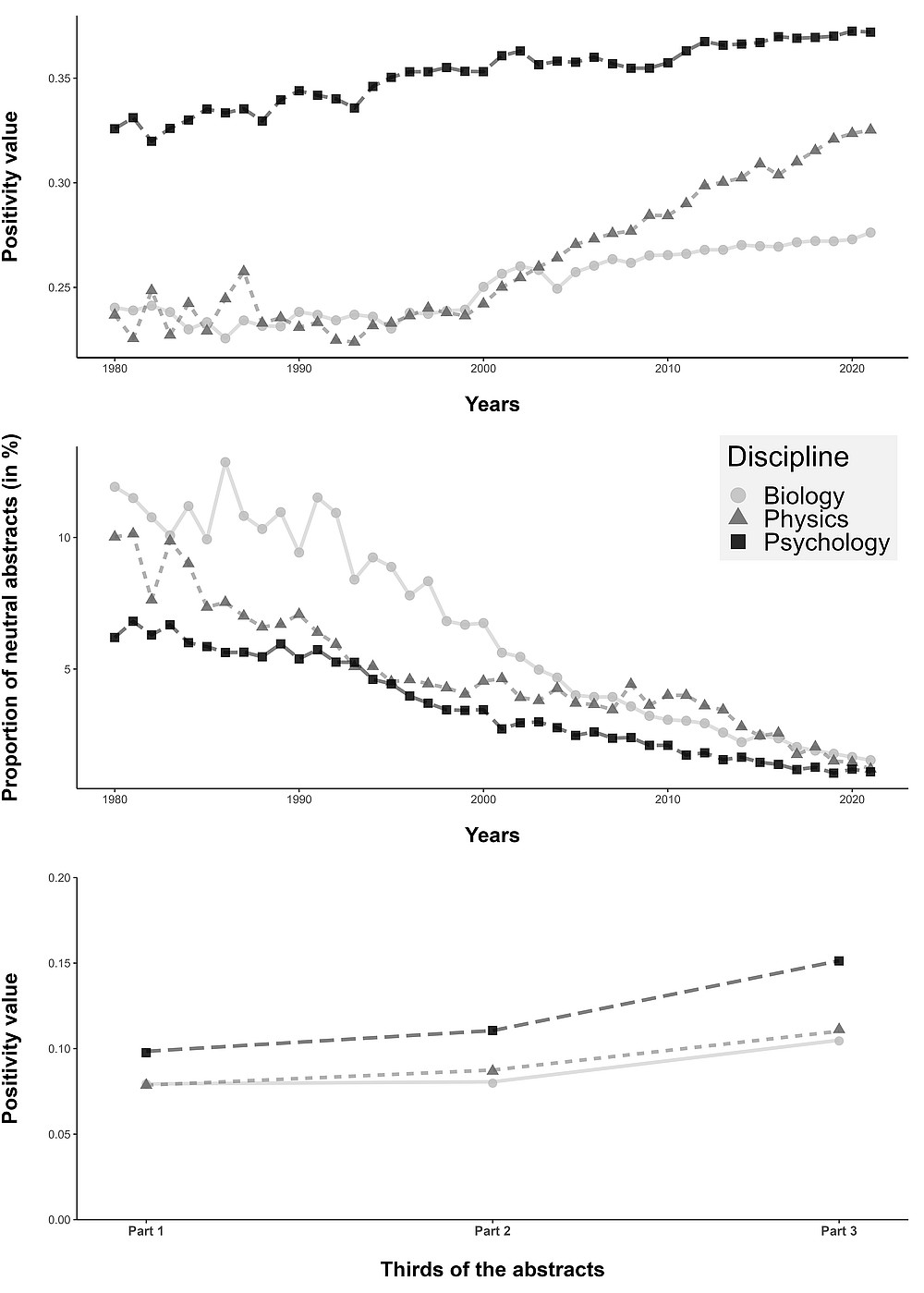My current research projects
Emotional embedding of scientific thinking and communication
Objectivity is one of the pillars of scientific research, not only in terms of data acquisition, but also in terms of communication. Using automatic text processing techniques, we investigate the emotional background generated by reading scientific abstracts and its influence on the attention given to individual publications. Recent publications show an increase in the use of emotional words in scientific abstracts, and in the graphs below it can be seen that the use of emotional language increases both towards the end of the abstract text and over the years. This raises the question of whether this is merely a harmless change in style, or whether this finding is a cause for concern regarding objective reporting in science.
Psychosocial effects on the results of neurofeedback
Neurofeedback is a technique for training voluntary control over aspects of one's own brain activity. Surprisingly, training results have been shown to be strongly influenced by psychosocial effects such as placebo, suggestion, gender stereotypes and expectations. However, little research has been done on this topic outside the activities of my own lab. This is a cause for concern, as considerable effort is required to demonstrate the clinical effectiveness of neurofeedback. Clinical application without clear evidence of efficacy beyond a placebo effect is not much different from believing in sorcery to solve health problems.
Training the sensorimotor rhythm
We have spent considerable time so far trying to find out who is able to regulate the sensorimotor rhythm and what the consequences of learning this regulation are. We have investigated the effects of age and baseline performance, verbal strategies, spirituality and physical activity, as well as positive and negative cognitive consequences of training. Notably, we have shown that the results of SMR training cannot be easily attributed to a mere placebo effect, as the two phenomena have opposite consequences for patterns of brain activity. One of our current goals is to link the training mechanisms mobilized during SMR training to general mechanisms of cognitive control and their neural correlates.
